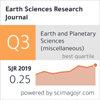人工智能在低渗透油藏测井岩性识别中的应用
IF 0.5
4区 地球科学
Q4 GEOSCIENCES, MULTIDISCIPLINARY
引用次数: 1
摘要
在低渗透储层中,现有测井岩性识别方法对小孔隙毛管压力曲线的转换精度不高,导致岩体识别精度较低。因此,本研究考虑了人工智能技术,以提高低渗透油藏岩性识别的准确性。首先利用雷达成图程序对储层测井位置进行预测,然后利用分段幂函数尺度转换方法对小孔隙毛管压力曲线进行转换,得到低渗透储层岩石孔隙特征。在此基础上,利用交叉图法采集测井孔隙特征数据并进行规划,得到测井岩体的响应参数,实现岩性的识别与分析。实验结果表明,与现有识别方法相比,应用人工智能技术后,低渗透储层测井岩性识别精度显著提高,识别过程耗时更短,充分证明应用人工智能技术有利于提高岩性识别性能。本文章由计算机程序翻译,如有差异,请以英文原文为准。
Application of Artificial Intelligence in Lithology Recognition of Petroleum Logging in Low Permeability Reservoirs
In low permeability reservoirs, the conversion accuracy of the existing petroleum logging lithology identification method to small pore capillary pressure curve is not high, resulting in a low rock mass identification accuracy. Therefore, artificial intelligence technology is considered in this study to enhance the accuracy of lithology identification in low permeability reservoirs. Firstly, the radar mapping program is used to predict the position of reservoir oil logging, and then the small pore capillary pressure curve is converted by using the conversion method of piecewise power function scale to obtain the pore characteristics of low-permeability reservoir rocks. On this basis, the crossplot method is used to gather the pore characteristic data in well logging and form a plan, and the response parameters of well logging rock mass are obtained to realize the identification and analysis of lithology. The experimental results show that, compared with the existing identification methods, the accuracy of lithology identification in low-permeability reservoir logging is significantly increased after the application of artificial intelligence technology, and the identification process takes less time, which fully proves that the application of artificial intelligence technology is conducive to improving the performance of lithology identification.
求助全文
通过发布文献求助,成功后即可免费获取论文全文。
去求助
来源期刊

Earth Sciences Research Journal
地学-地球科学综合
CiteScore
1.50
自引率
0.00%
发文量
0
审稿时长
>12 weeks
期刊介绍:
ESRJ publishes the results from technical and scientific research on various disciplines of Earth Sciences and its interactions with several engineering applications.
Works will only be considered if not previously published anywhere else. Manuscripts must contain information derived from scientific research projects or technical developments. The ideas expressed by publishing in ESRJ are the sole responsibility of the authors.
We gladly consider manuscripts in the following subject areas:
-Geophysics: Seismology, Seismic Prospecting, Gravimetric, Magnetic and Electrical methods.
-Geology: Volcanology, Tectonics, Neotectonics, Geomorphology, Geochemistry, Geothermal Energy, ---Glaciology, Ore Geology, Environmental Geology, Geological Hazards.
-Geodesy: Geodynamics, GPS measurements applied to geological and geophysical problems.
-Basic Sciences and Computer Science applied to Geology and Geophysics.
-Meteorology and Atmospheric Sciences.
-Oceanography.
-Planetary Sciences.
-Engineering: Earthquake Engineering and Seismology Engineering, Geological Engineering, Geotechnics.
 求助内容:
求助内容: 应助结果提醒方式:
应助结果提醒方式:


